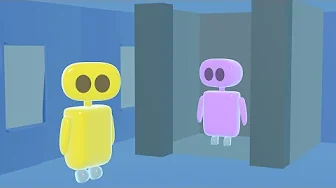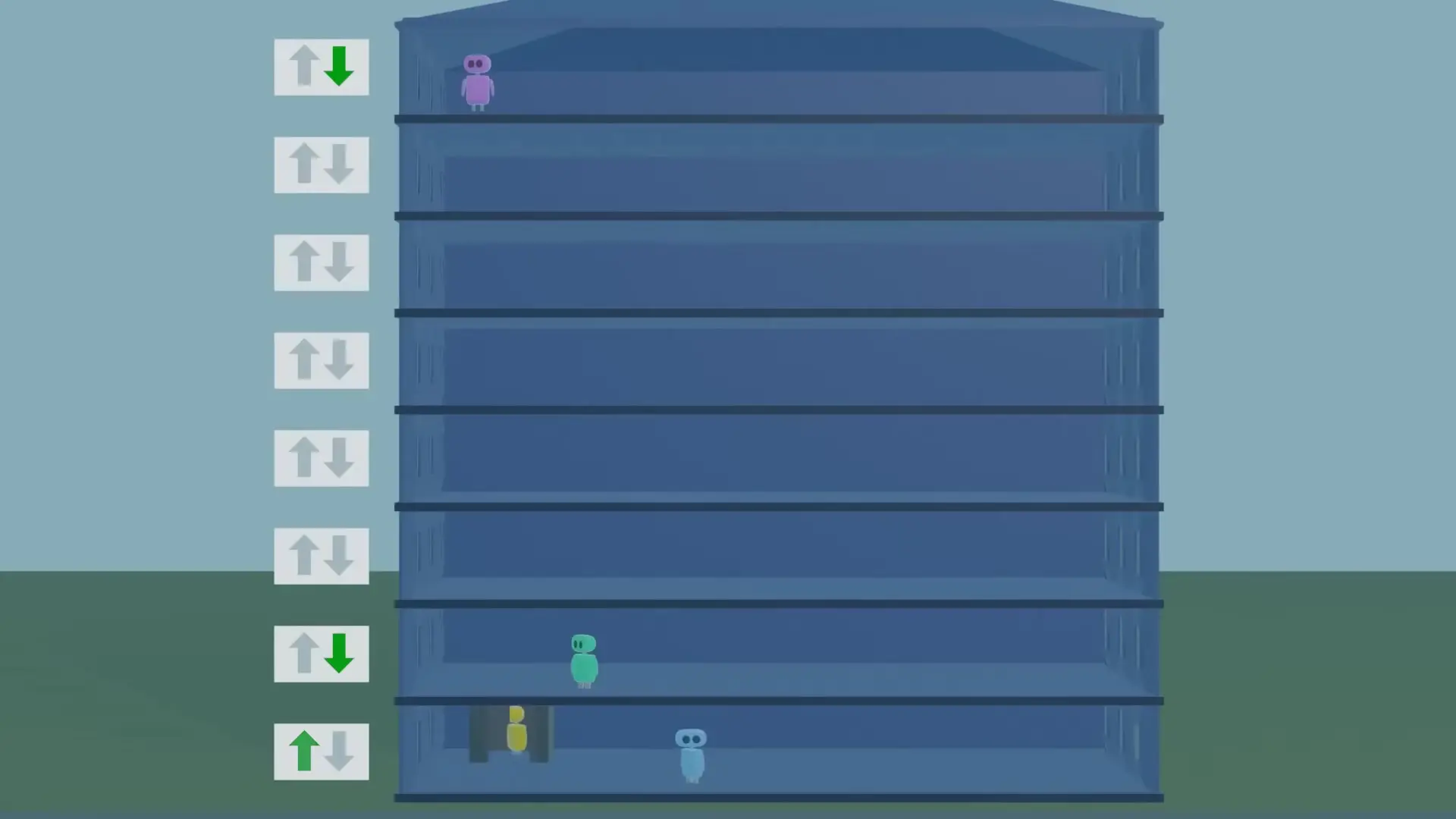
When elevators transitioned from human operators to computer control, a fundamental question emerged: how should these systems decide where to go next? The seemingly simple task of moving people efficiently through a building actually presents a fascinating optimization problem that continues to evolve with technology.
The Fundamental Elevator Problem
At its core, elevator system design revolves around a key question: what makes an elevator system "ideal"? If we define success as minimizing passenger wait times, a simple approach would be to always service the nearest floor with waiting passengers, picking up others going in the same direction along the way.
However, this nearest-first strategy creates a significant problem in taller buildings. When there's constant traffic between lower floors (like the lobby and second floor), passengers waiting on higher floors might experience excessive delays as the elevator continuously prioritizes the closer requests.

The Classic Elevator Algorithm
To address this fairness issue, elevator architects developed what became known as the "elevator algorithm" (aptly named). This approach follows a predictable pattern: starting at the ground floor, the elevator travels upward to the highest requested floor, servicing all upward-bound requests along the way. Then it reverses direction, traveling downward and servicing all downward-bound requests until reaching the ground floor again.
This algorithm ensures that every passenger eventually receives service, preventing the indefinite wait times that could occur with the nearest-first approach. Interestingly, this same algorithm found applications beyond elevator architecture - it's also used in computer disk scheduling systems, where a hard drive's read/write head follows a similar pattern to efficiently access data.

Optimization Improvements
The basic elevator algorithm can be enhanced with simple optimizations. For instance, if an elevator is traveling upward but detects no waiting passengers in that direction, it can immediately reverse course rather than continuing to the top floor. This small adjustment improves efficiency without compromising the algorithm's fairness.
Multi-Elevator Coordination
Adding more elevators seems like an obvious solution to increase building capacity, but simply duplicating the same algorithm across multiple elevators creates new inefficiencies. Without coordination, multiple elevators might travel in the same direction simultaneously, essentially functioning as a single unit rather than as an optimized system.
Modern elevator system design incorporates sophisticated coordination strategies:
- Inter-elevator communication allowing elevators to coordinate their movements
- Zone-based assignments where specific elevators prioritize certain floor ranges
- Express elevators that only service high-traffic floors, optimizing for common transit patterns
- Dynamic allocation based on current building traffic patterns
Beyond Wait Times: Multiple Optimization Goals
Contemporary elevator system design considers multiple optimization criteria beyond simple wait time reduction:
- Minimizing total journey time (wait time plus travel time)
- Preventing elevator overcrowding
- Reducing energy consumption
- Accommodating priority access for certain floors or users
- Adapting to time-of-day traffic patterns

Machine Learning Revolutionizes Elevator Systems
Given the complexity of optimizing for multiple variables across different building types with unique traffic patterns, elevator system designers have increasingly turned to machine learning approaches. Reinforcement learning, in particular, has proven effective for elevator control systems.
With reinforcement learning, the elevator system can:
- Implement initial algorithms based on general best practices
- Monitor performance metrics like wait times and passenger satisfaction
- Gradually adjust its decision-making logic based on observed results
- Develop building-specific optimizations that account for unique usage patterns
- Adapt to changing conditions like time of day, day of week, or seasonal variations
This approach allows elevator systems to continuously improve their performance without explicit reprogramming, learning the optimal strategies for each specific building environment.
Implementation Example: A Basic Elevator Algorithm
To illustrate how these concepts might be implemented, here's a simplified pseudocode representation of a basic elevator algorithm:
class Elevator {
constructor(totalFloors) {
this.currentFloor = 1;
this.direction = "up";
this.totalFloors = totalFloors;
this.requestedFloors = new Set();
}
requestFloor(floor) {
this.requestedFloors.add(floor);
}
move() {
// If no requests, do nothing
if (this.requestedFloors.size === 0) return;
// If going up but no requests above, change direction
if (this.direction === "up" &&
!this.hasRequestsAbove(this.currentFloor)) {
this.direction = "down";
}
// If going down but no requests below, change direction
if (this.direction === "down" &&
!this.hasRequestsBelow(this.currentFloor)) {
this.direction = "up";
}
// Move in current direction
if (this.direction === "up") {
this.currentFloor++;
} else {
this.currentFloor--;
}
// Service current floor if requested
if (this.requestedFloors.has(this.currentFloor)) {
this.serviceFloor(this.currentFloor);
}
}
serviceFloor(floor) {
console.log(`Servicing floor ${floor}`);
this.requestedFloors.delete(floor);
}
hasRequestsAbove(floor) {
return Array.from(this.requestedFloors).some(f => f > floor);
}
hasRequestsBelow(floor) {
return Array.from(this.requestedFloors).some(f => f < floor);
}
}This simple implementation demonstrates the basic logic of the elevator algorithm with the optimization to change direction when no further requests exist in the current direction.
The Future of Elevator System Design
As buildings become taller and more complex, elevator system design continues to evolve. Modern innovations include destination dispatch systems (where passengers select their destination floor before entering the elevator), predictive algorithms that anticipate traffic patterns, and integration with building access systems for enhanced security and personalization.
The algorithmic principles developed for elevator systems have applications far beyond vertical transportation. Similar optimization challenges exist in traffic management, manufacturing scheduling, computer resource allocation, and many other domains where limited resources must be efficiently allocated to meet varying demands.
The humble elevator, once operated by human attendants, has become a fascinating case study in the application of algorithmic thinking and machine learning to everyday problems. The next time you step into an elevator, consider the sophisticated decision-making happening behind the scenes as the system works to optimize your journey.
Let's Watch!
The Evolution of Elevator Algorithms: How Smart Systems Optimize Building Traffic
Ready to enhance your neural network?
Access our quantum knowledge cores and upgrade your programming abilities.
Initialize Training Sequence